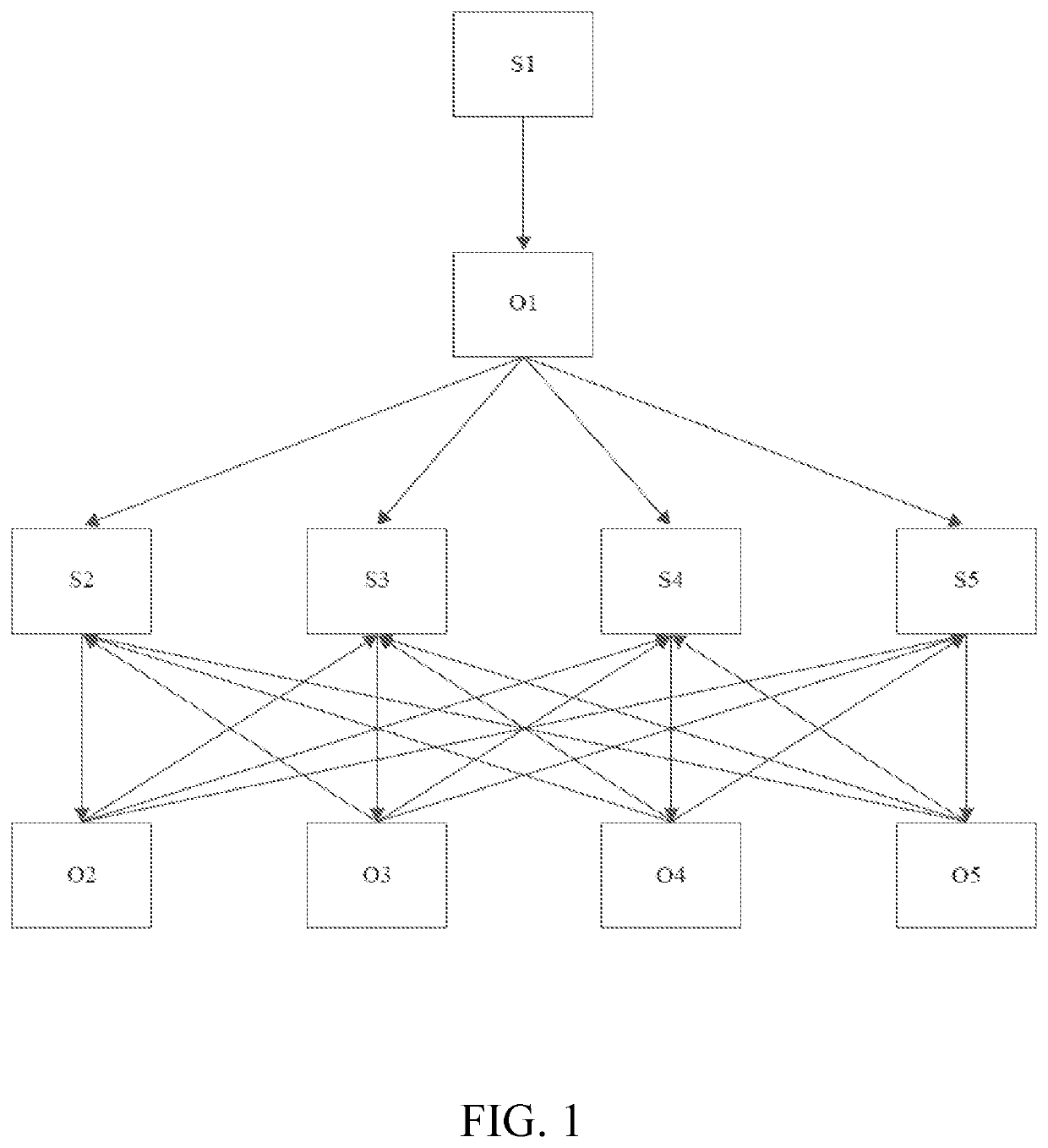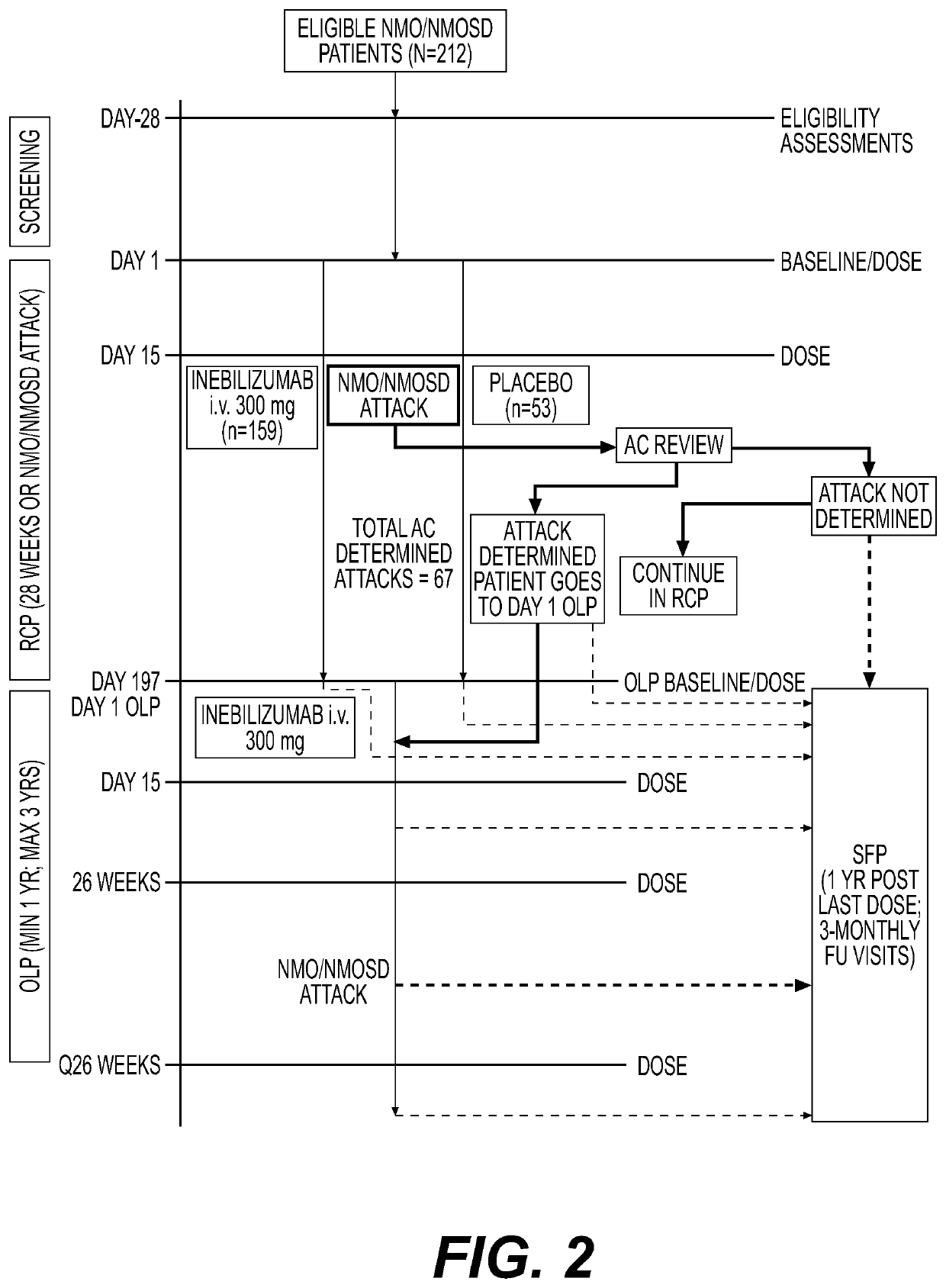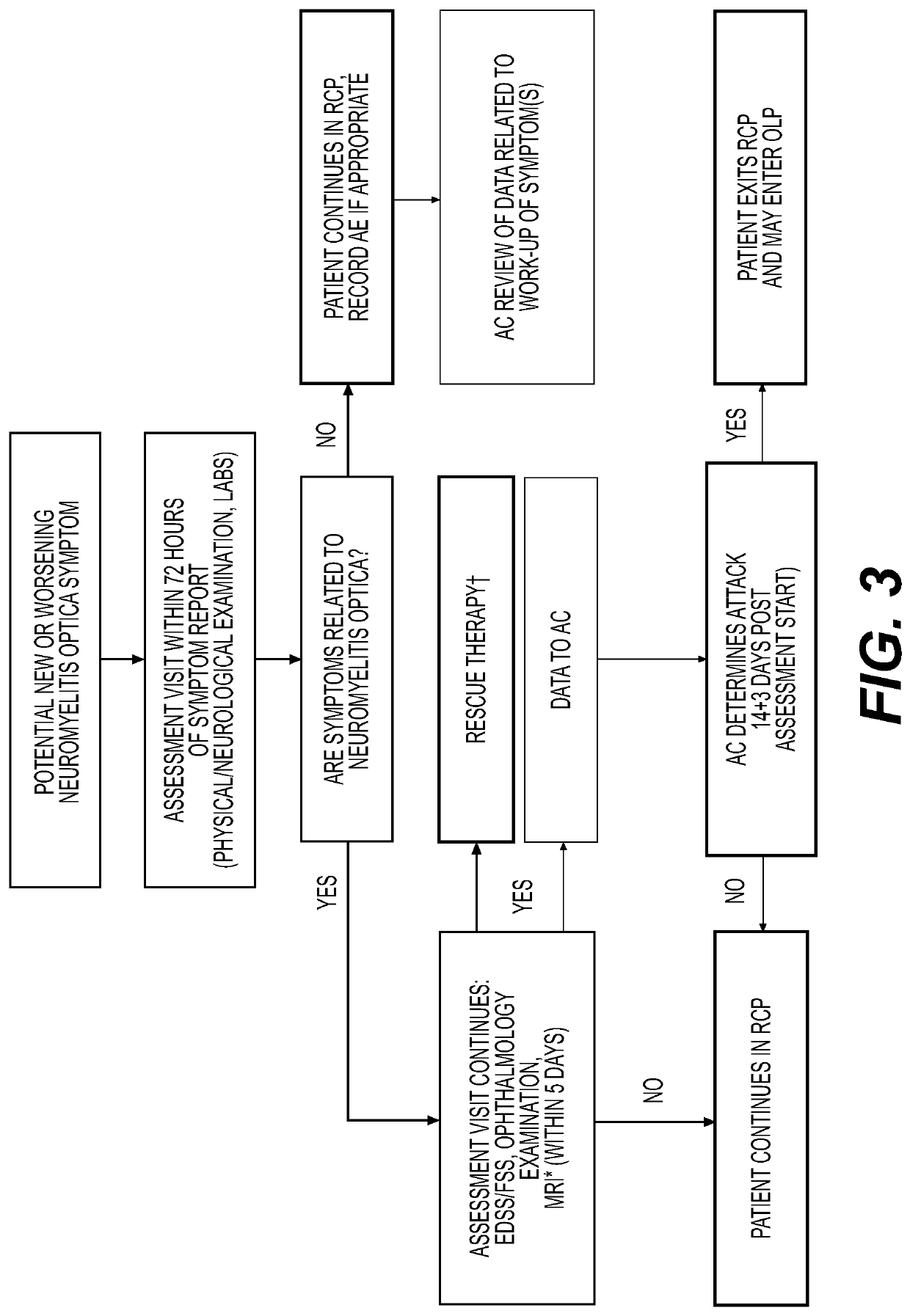Use of an Anti-cd19 antibody to treat autoimmune disease
a technology of autoimmune disease and anti-cd19, which is applied in the direction of antibody medical ingredients, drug compositions, peptides, etc., can solve the problems of patients at risk of respiratory failure death, inability to complete recovery from attacks,
- Summary
- Abstract
- Description
- Claims
- Application Information
AI Technical Summary
Benefits of technology
Problems solved by technology
Method used
Image
Examples
example 1
for Elements of Clinical Trial Design
[0085]Overview. An NMOSD clinical trial, N-MOmentum, was designed as a randomised, placebo-controlled, double-blind, 197-day, phase 2 / 3 study with an open-label extension period to assess the efficacy and safety of VIB551 (also referred to as VIB551 or MedI551), an anti-CD19, B-cell depleting antibody, in patients with NMOSD, recruited from 99 sites in 24 countries. Participants were randomised (3:1) using an interactive voice response system / interactive web response system, to intravenous VIB551 300 mg or placebo, respectively, administered on Days 1 and 15. Efficacy endpoints were assessed in the intent-to-treat population, and safety endpoints in the as-treated population. The primary endpoint was time to first adjudicated attack; secondary endpoints included disability worsening, magnetic resonance imaging (MRI) lesion activity, and hospitalisations.
[0086]Arm selection. The placebo-comparator treatment arm was chosen because there are no curr...
example 2
Trial Subject Enrollment Requirements and Criteria
[0102]Overview. Key inclusion criteria were: adults with a diagnosis of NMOSD2,17 and EDSS score ≤8.0, and a history of either at least one attack requiring rescue therapy (intravenous corticosteroids, intravenous immunoglobulin, and / or plasma exchange) within the year before screening or at least two attacks requiring rescue therapy in the 2 years before screening. AQP4-IgG seropositive and seronegative patients were eligible; seronegative participants had to meet the Wingerchuk 2006 criteria.17. There were no pre-planned recruitment targets with regard to AQP4-IgG serostatus. It was assumed that recruitment would reflect the known demographics of the patient population of approximately 80% seropositive, 20% seronegative.17 All participants provided written informed consent.
[0103]Sample size. The original sample size calculation concluded that 212 patients would need to be recruited to observe a required 67 attacks. This number of p...
example 3
Trial Protocol
[0119]Screening period. Subjects with a diagnosis of NMO / NMOSD were screened over a 28-day period to establish their eligibility to participate in the study based on the inclusion and exclusion criteria. All subjects who fulfilled eligibility criteria were randomized into the study.
[0120]Randomization. The subjects were randomized into the study in a 3:1 ratio to receive intravenously VIB551 (30 mg) or placebo as described in Table 1. Randomization occurred on Day 1 and was stratified by AQP4-IgG serostatus (in a ratio of approximately 80:20 seropositive and seronegative subjects, respectively) and by region (Japan vs non-Japan).
TABLE 1Randomized-controlled period treatment regimenTreatmentArmTreatment Regimen1300 mg intravenous MEDI-551on Day 1 and Day 152intravenous Placebo on Day 1and Day 15
[0121]Randomized-controlled period (Day 1 to Day 197). Following randomization on Day 1, the subjects were treated with VIB551 or placebo on Day 1 and Day 15. An oral corticoster...
PUM
| Property | Measurement | Unit |
|---|---|---|
| Fraction | aaaaa | aaaaa |
| Fraction | aaaaa | aaaaa |
| Fraction | aaaaa | aaaaa |
Abstract
Description
Claims
Application Information
 Login to View More
Login to View More - R&D
- Intellectual Property
- Life Sciences
- Materials
- Tech Scout
- Unparalleled Data Quality
- Higher Quality Content
- 60% Fewer Hallucinations
Browse by: Latest US Patents, China's latest patents, Technical Efficacy Thesaurus, Application Domain, Technology Topic, Popular Technical Reports.
© 2025 PatSnap. All rights reserved.Legal|Privacy policy|Modern Slavery Act Transparency Statement|Sitemap|About US| Contact US: help@patsnap.com



